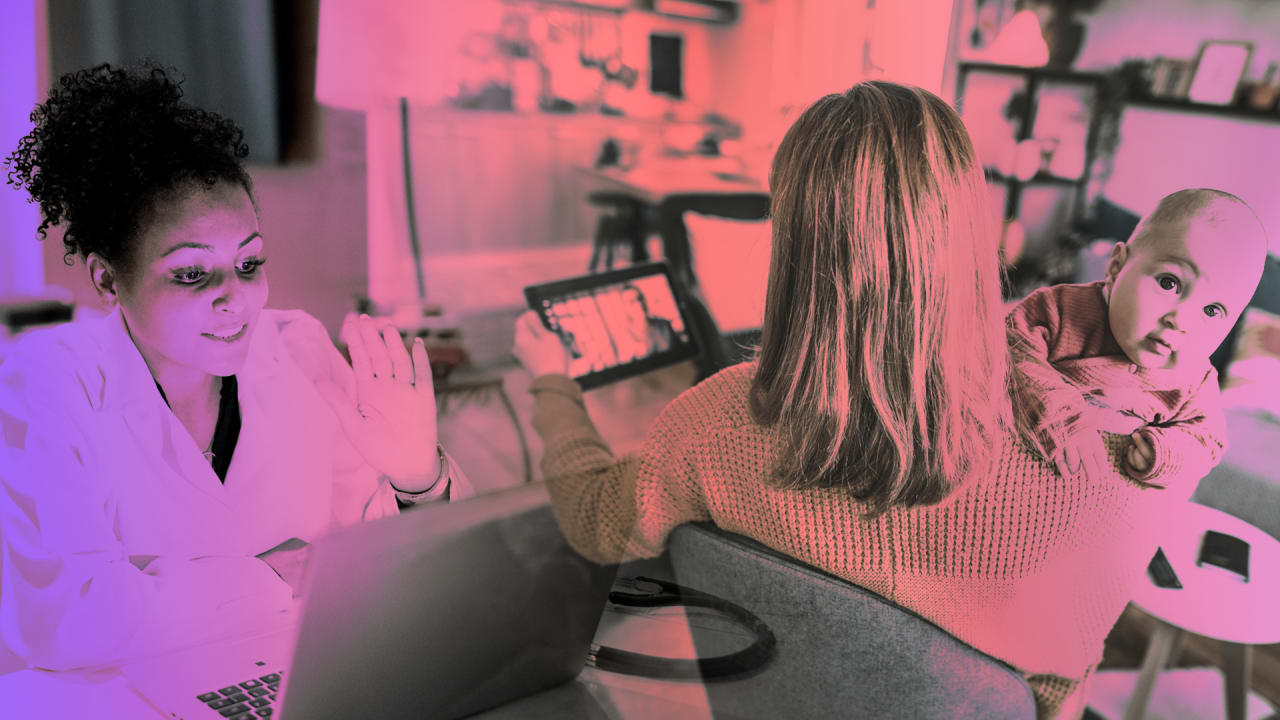
As the world goes through digitalization at a rapid pace, fears of the dehumanizing aspect of technology are pervasive—and these fears are no exception in the healthcare industry. Certainly, no one wants robots directing their healthcare needs.
With the pandemic highlighting just how vital empathy and humanity truly is, people’s reservations around adopting new, technology-driven ways of treating patients have been reinforced. But as the world turns towards more technology, we’ve uncovered something truly unexpected in healthcare.
Contrary to our initial fears, digitalizing healthcare is proving to be even more human-centric than we could have imagined. Even through virtual connections, we have maintained and often intensified the human element of healthcare. With the push from the pandemic to digitalize, we’ve discovered the sweet spot: finding ways that technology aides and advances innovation and medicine, while ensuring that one of the most important aspects of healthcare—the human touch—is at the forefront of everything we do.
Through our shift to digitalization at the beginning of the pandemic, we have found something surprising: that technology actually helps bring patients closer to their primary care doctors. This is especially true with telemedicine as patients faced lockdowns. In fact, with 71% of Americans fearful to visit doctors’ offices due to COVID-19, more and more people have scheduled a telehealth visit.
Prior to telehealth visits, the average appointment would take approximately two hours, but the patient would only see their doctor for 20 minutes, because for a lot of that additional time, patients were left waiting for the doctor to be available. The time needed for an appointment can often deter patients from scheduling appointments or cause patients to cancel their appointments. Alternatively, the average telehealth visit is 13 to 15 minutes long, but despite being shorter, about 53% of patients are reporting that telemedicine somewhat or significantly increases their involvement in treatment decisions. In fact, as patients have become more willing to embrace diagnosis tools and chatbots, they are often coming to physician visits more informed and asking more precise questions about their symptoms and conditions. What’s more, with telehealth, physicians are reaching patients for appointments and follow-ups, while providing treatments and diagnoses quicker since scheduling is now easier. One study even found that in a 10-week period, only 1 in 825 telemedicine appointments were cancelled during COVID-19. Not only is technology helping provide patients with equal or better treatments, but it’s increasing the number of patients who attend visits and saving patients’ and physicians’ time.
Digitalizing healthcare has also created new communities and networks, helping to connect patients with one another. As people turned to online groups to gain support, a Facebook study found that 49% of respondents received emotional support from groups during the pandemic. But technology allows for more than just patient-to-patient emotional support. Through different platforms and groups, patients can share and learn more about others’ experiences, conditions and treatments even if they are miles apart. For patients with rare diseases, connecting with someone who is battling the same condition can be invaluable.
Lastly, COVID-19 has revealed great disparities in healthcare, and there’s a high priority in finding solutions that will improve outcomes across all populations. Utilizing technology can help recruit a more diverse patient population by gender, ethnicity, income, geography, and more, which we discovered throughout the pandemic. As we looked for ways to continue R&D amid the height of COVID-19, we turned to decentralized trials. These trials utilize technology to allow researchers to conduct studies that are more inclusive and accessible. This includes everything from using electronic signatures for approvals, to having patients wear monitoring devices at home that allow researchers to follow the patients’ habits and health patterns appropriately.
It also gives patients the opportunity to participate in studies closer to home, and sometimes even from the comfort of their own homes. According to a study patients with a rare disease, this increased 54% of respondents’ likelihood to participate in trials. Technology has helped improve the overall experience patients have during trials and has allowed researchers to be more connected to patients.
We often discuss how the world will never be the same after this pandemic—and frankly we can’t let it go back to the it was before. During the pandemic, we have turned to technology to conduct many of our practices with a more efficient, inclusive, and human-centric approach. We have found ways to maintain and even grow the human connection between patients and their doctors, to increase relationships throughout the patient population and to give more patients access to clinical trials and life-saving medicines. If we can successfully continue and expand the digital advancements we have established during the pandemic, our “new normal” will be even more humanistic than ever before.
Paul Hudson is the CEO of Sanofi, the global pharmaceutical company headquartered in France.
from WordPress https://ift.tt/33OXfJ4
via IFTTT



No comments:
Post a Comment